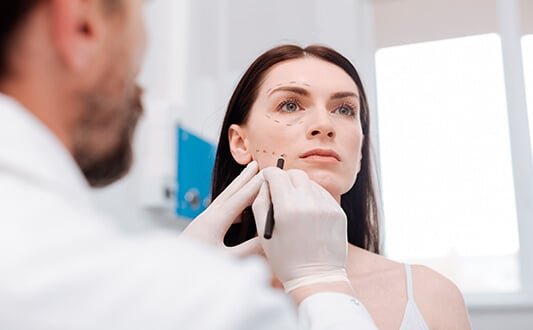Polydactyly is a medical term referred to having extra finger or toe. It is an inborn condition connected with disturbances of the limb formation due to genetic or external influences. Influences in early pregnancy are the most significant, as the digits are already recognizable at 41-43 days of gestation and are completely formed at 53 days.
This structural defect can be corrected by means of plastic surgery. Depending on the polydactyly form, the type of intervention and its terms are determined. Performed before 2 years old, the surgery preserves normal function of the limb and avoids psychological trauma. Such interventions are possible only in a number of world’s leading hospitals.
Content
- How to understand that my child have polydactyly?
- What types of polydactyly exist?
- Why is it dangerous?
- How can polydactyly be fixed?
- What is going to happen after the surgery?
- Treatment of polydactyly in the world’s leading hospitals
- How to undergo treatment abroad
How to understand that my child have polydactyly?
The initial diagnosis of polydactyly does not require any special diagnostics, simple physical examination of the neonatologist is totally enough for the beginning. Visual presence of an additional finger or toe is an indication for the X-ray examination.
The procedure shows the inner structure of the accessory organ. It may consist just from the skin fold or be similar with the normal finger (containing bones, ligaments and tendons). Sometimes polydactyly is diagnosed prenatally, during the obligatory screening US examination.
The disease may be inherited (like most cases of small finger duplication and central duplication) or occur without any obvious cause (like the thumb duplication). “Inherited” means that a child’s mother or father had the same problem and it has the genetic origin. It also can be noted in genetic syndromes:
- Bardet-Biedl syndrome.
- Greig cephalopolysyndactyly syndrome.
- Triphalangeal thumb-polydactyly syndrome.
- And other ones.
In other cases the genetic code is normal and malformation is accidental. No one could predict or prevent it.
What types of polydactyly exist?
Depending on the localization of the additional finger, three types of polydactyly exist:
- Preaxial polydactyly (or the thumb duplication).
- Postaxial polydactyly (or the small finger duplication).
- Central polydactyly (duplication of the central fingers, more rare condition).
Preaxial polydactyly is the most widespread form of the pathology, arising in 1 of the 1,000-10,000 children. It is usually a sporadic condition, not connected with heredity. To differentiate diverse forms of the preaxial polydactyly, doctors use the Wassel classification:
- Type I – bifid distal phalanx of the thumb.
- Type II – duplicated distal phalanx of the thumb.
- Type III – bifid proximal phalanx of the thumb.
- Type IV – duplicated proximal phalanx of the thumb.
- Type V – bifid metacarpal.
- Type VI – duplicated metacarpal.
- Type VII – triphalangia.
It is important to establish the correct polydactyly type, as this is the basis for choosing the correct surgery type in the future.
Why is it dangerous?
Having extra finger does not cause pain or disturb a baby. Actually, before the certain age a child does not understand that there is something wrong with him. Further, when he starts to compare himself to the other children, the deformity may cause discomfort and lead to poor socialization. Thus, the first risk or polydactyly is the psychological trauma.
The second one is functional disturbances. This especially concerns the thumb duplication and extra phalanxes. A child can squeeze the hand with enough force, but fine motor skills suffer. It may be difficult to write, interact with small objects (e.g. coins), tie shoelaces, etc.
In rare cases severe anatomical changes lead to the disturbances of blood supply, sensory and motor nerve endings function. These may lead to the numbness and other sensitivity disorders, absence of movements in the affected finger and even tissue necrosis.
How can polydactyly be fixed?
The most effective treatment of polydactyly is surgical correction of the defect. This improves the child’s appearance and function of the hand. Surgical treatment includes not only removing of the additional finger, but also the reconstruction of soft tissues, joints, blood vessels and nerve endings, tendons and ligaments. Plastic surgery carefully considers the cosmetic outcome.
General aim of the surgical intervention is to remove the least functional additional component (finger or phalanx) and reconstruct the normal one:
- If an extra digit is attached to the hand only by soft tissues, it may be removed during the minor operation or ligating.
- If an extra digit is well-formed, surgery involves correction of the bone structures, joints and ligamentous apparatus.
- In central polydactyly surgeons practically re-form the whole hand.
It is also important to choose the most appropriate age for the intervention performing:
- Small additional digits (especially those ones who are connected to the hand only with soft tissues) can be removed immediately after the birth, at 3-6 weeks of age.
- Well-formed additional small fingers are typically treated at 6-12 months of age.
- Well-formed additional thumbs are removed later, at 12-18 months of age.
- If it is impossible to treat polydactyly early, the surgery may be performed in adults as well.
What is going to happen after the surgery?
Removing small additional digits without well-formed bones does not require rehabilitation or even painkillers intake. Only antibiotics may be prescribed for the prophylaxis of infectious complications.
More extended surgeries are implemented in hospitals, on the inpatient basis. Such interventions require general anesthesia, which is strictly adjusted to the child’s age and weight. A child may need to wear a cast or splint for a certain period of time. During the follow-up visits an occupational therapist assesses the functional state of the hand. If necessary, a complex of physical exercises will be administered.
Also, it is better to plan an advanced general check-up, as polydactyly is often associated with the heart and craniofacial abnormalities, blood disorders.
Treatment of polydactyly in the world’s leading hospitals
As the plastic surgery of polydactyly is mainly performed in children of the young age, such interventions require high-tech medical equipment and excellent skills of doctors. German hospitals rank among the leading healthcare institutions in this sphere. Doctors in Germany elaborate individualized treatment programs, perform two-step medical interventions in children with complex pathology and pay attention to qualitative rehabilitation.
The list of the leading hospital includes:
- University Hospital of Ludwig Maximilian University of Munich, Department of Hand, Plastic and Aesthetic Surgery
- University Hospital Halle (Saale), Department of Pediatric Traumatology and Surgery
- University Hospital Marburg UKGM, Department of Pediatric Surgery
- University Hospital Hamburg-Eppendorf, Department of Pediatric Surgery
- University Hospital Erlangen, Department of Plastic Surgery, Adult and Pediatric Hand Surgery
The cost of surgical treatment for polydactyly is from 5,750 euros.
How to undergo treatment abroad
As the plastic surgery of polydactyly is mainly performed in children of the young age, such interventions require high-tech medical equipment and excellent skills of doctors. German clinics rank among the leading healthcare institutions in this sphere. Doctors in Germany elaborate individualized treatment programs, perform two-step medical interventions in children with complex pathology and pay attention to the qualitative rehabilitation.
If you are seeking medical help abroad for the first time, it will be better to use full-pack services of the company Booking Health. Specialists of Booking Health offer comprehensive help in:
- Choosing the right university clinic or academic hospital.
- Booking the appointment on the desired day.
- Establishing distant communication with the treating physician before and after the surgery.
- Preparing treatment program in advance, giving advice on the best surgical techniques.
- Providing favorable cost for treatment, without overpricing (saving up to 50%).
- Supervising the medical program at all stages.
- Control of invoices and return of unspent funds after the final calculation.
- Organization of rehabilitation, if necessary.
- Offering additional service of the highest level: booking accommodation and plane tickets, transfer organization, interpreter support.
Should you leave the request with contact data and case history on the website of Booking Health, our medical advisor will contact you within 24 hours. After discussing all aspects of the treatment program, he will guide you through the all stages of undergoing plastic surgery abroad.
Choose treatment abroad and you will for sure get the best results!
Authors:
The article was edited by medical experts, board certified doctors Dr. Vadim Zhiliuk, Dr. Sergey Pashchenko. For the treatment of the conditions referred to in the article, you must consult a doctor; the information in the article is not intended for self-medication!
Sources:
Read:
Why Booking Health - questions and answers
How to make right decision when choosing the clinic and specialist
7 reasons to trust to the rating of clinics on the Booking Health portal
Don't know where to start?
Contact Booking Health







